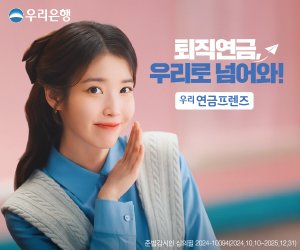
Scenes show Eulpaso (Kim Moo-yul), the highest-ranking official of Goguryeo Kingdom, in the upcoming Tving drama "Queen Woo." Courtesy of Tving
Tving's upcoming drama "Queen Woo," set in the Goguryeo Kingdom (37 B.C. – A.D. 668), has been embroiled in a controversy related to the issue of historical accuracy.
Slated for release on Aug. 29, the drama tells the story of a queen of Goguryeo who fights to secure the throne after her husband passes away unexpectedly.
However, the teaser videos and promotional stills have ignited debates online, with many saying the costumes and hairstyles of the characters appear to be heavily influenced by Chinese styles rather than accurately representing the Goguryeo period.
The main point of contention was the styling of key characters, including Eulpaso (Kim Moo-yul), the highest-ranking official of Goguryeo; Go bal-gi (Lee Soo-hyuk), the vicious third prince and heir to the throne; and Go Nam-mu (Ji Chang-wook), the king.
Internet users claimed the middle-part hairstyle of the characters with topknots, hats and costumes are reminiscent of Chinese historical dramas set during the Warring States period or Qin Dynasty.
Criticism has been particularly sharp regarding the portrayal of Eulpaso, a well-known historical figure who served as the prime minister of Goguryeo in the second century. One online commenter pointed out that Eulpaso’s appearance closely resembles a character from the Chinese drama "The Qin Empire," set during the late Warring States period.
Another said, "For a drama set in Goguryeo, we should have seen 'jougwan' (a headdress or topknot crowned with a pair of feathers) and gilt-bronze crowns. That's what sets it apart from China. Even if 100 percent accuracy is difficult, they should have tried their best to get it as close as possible."
The distinctive jougwan is featured in various Goguryeo artifacts including tombs and murals. This style of headdress was also prevalent among the people of the other Three Kingdoms of Korea states, Silla and Baekje. Gilt-bronze crowns served as a key distinguishing element of Goguryeo attire, setting it apart from Chinese clothing of the time.
Additionally, there has been criticism over the fact that Eulpaso's clothing was fastened on the right side, which is Chinese style, whereas Goguryeo people traditionally fastened their clothing on the left side.

Actor Jun Jong-seo in a promotional photo for Tving's period drama "Queen Woo" / Courtesy of Tving
The drama has caused further anger for many in Korea, especially at a time when a cultural feud between Korea and China is intensifying over the origins of kimchi and hanbok among other things. People expressed concerns the drama could inadvertently strengthen China's efforts to distort history such as through the so-called Northeast Project.
In fact, after the release of the teaser and stills, some Chinese netizens have made mocking comments on Douban, a Chinese social networking service, such as, "The costume and props feel like they were copied from Hengdian (China's Hollywood)," and "Koreans love to copy Chinese culture."
In response to the backlash, Tving has stated that while "Queen Woo" is inspired by historical figures and events, it is ultimately a work of fiction.
"We received advice from experts based on verifiable related historical documents and records and we created the drama based on imagination to portray the part for which there are no records,” the company said.
This is not the first time a Korean period drama has faced such a backlash over inaccurate portrayals, with one drama even having to stop filming in the middle of broadcasting after the controversy over historical distortion grew and advertisers stopped supporting the drama.
SBS' 2021 historical-supernatural series "Joseon Exorcist" was canceled after airing two episodes due to the backlash from many viewers for the historical inaccuracies and Chinese props including the Chinese traditional baked good known as mooncake and a shaman's Chinese-style costume shown in the series.
TvN's 2022 period drama series "Under the Queen's Umbrella" faced controversy for falsely portraying Korean history when it came to royal customs and using modern simplified Chinese characters in scenes.

A promotional poster for SBS historical-supernatural series "Joseon Exorcist" (2021), which was canceled after two episodes due to accusations of history distortions / Courtesy of SBS





































































